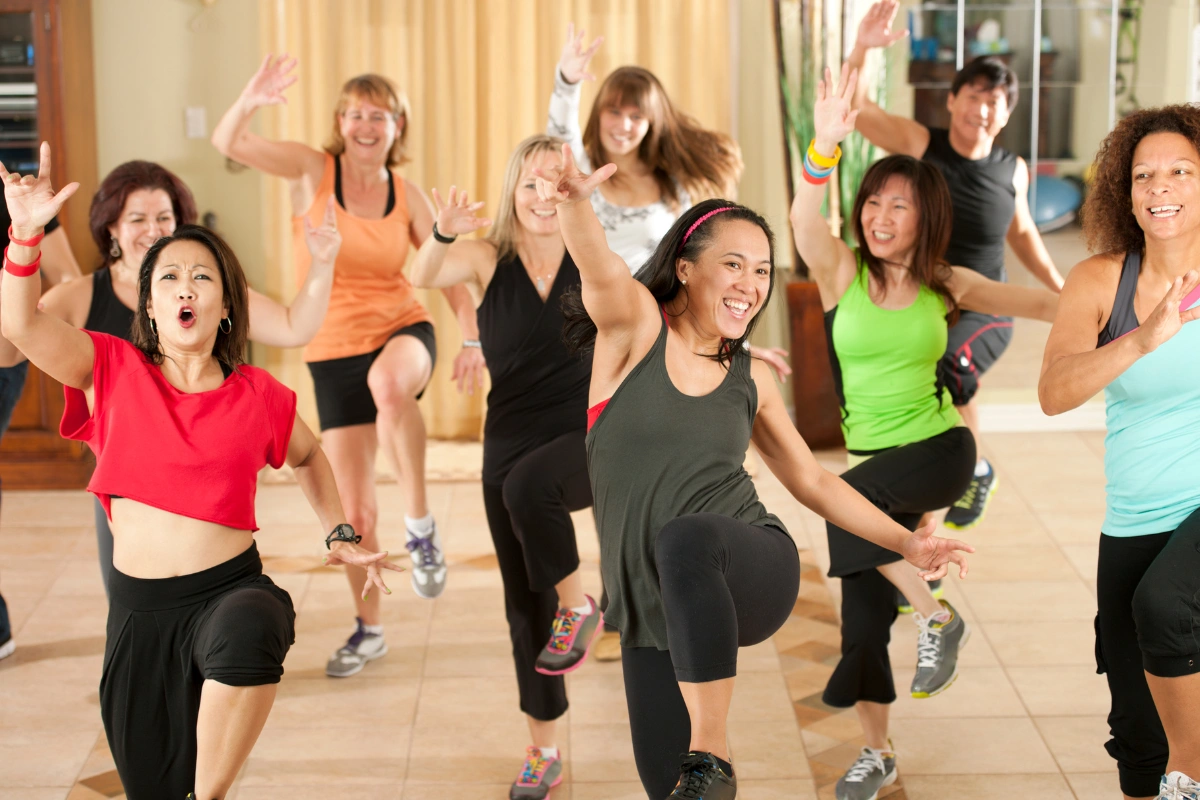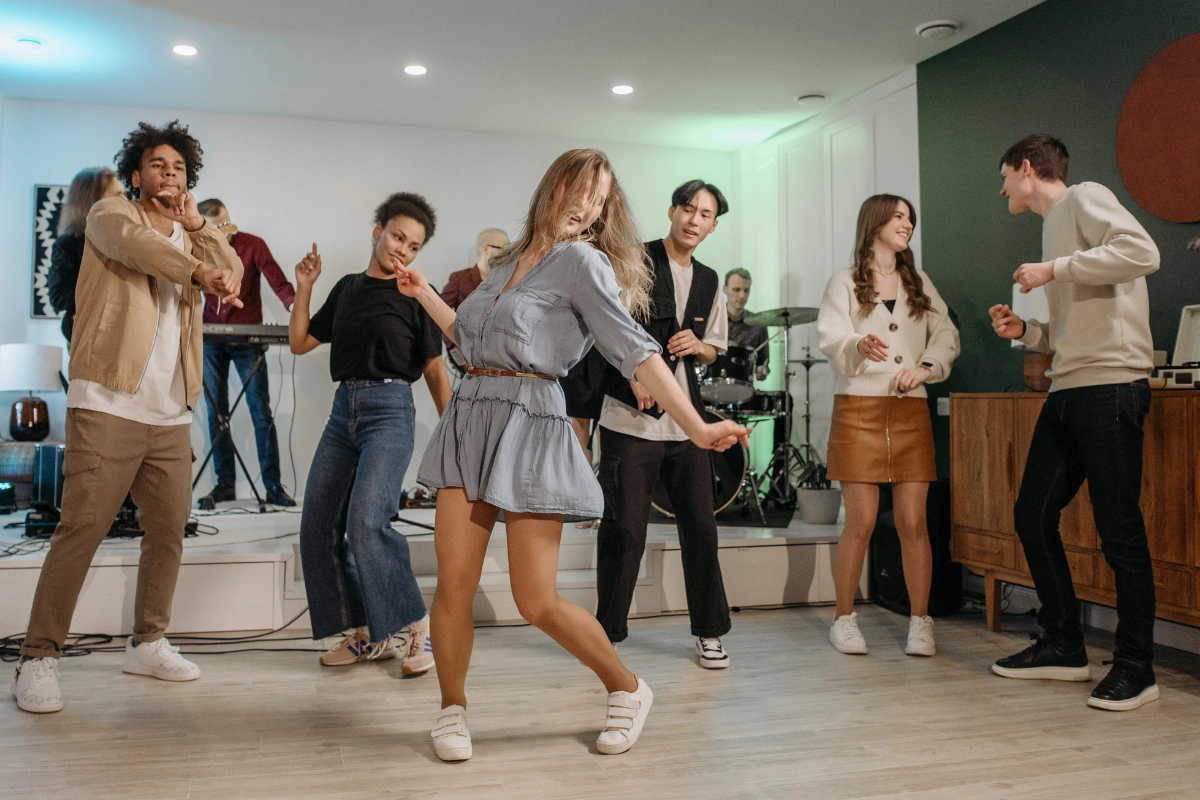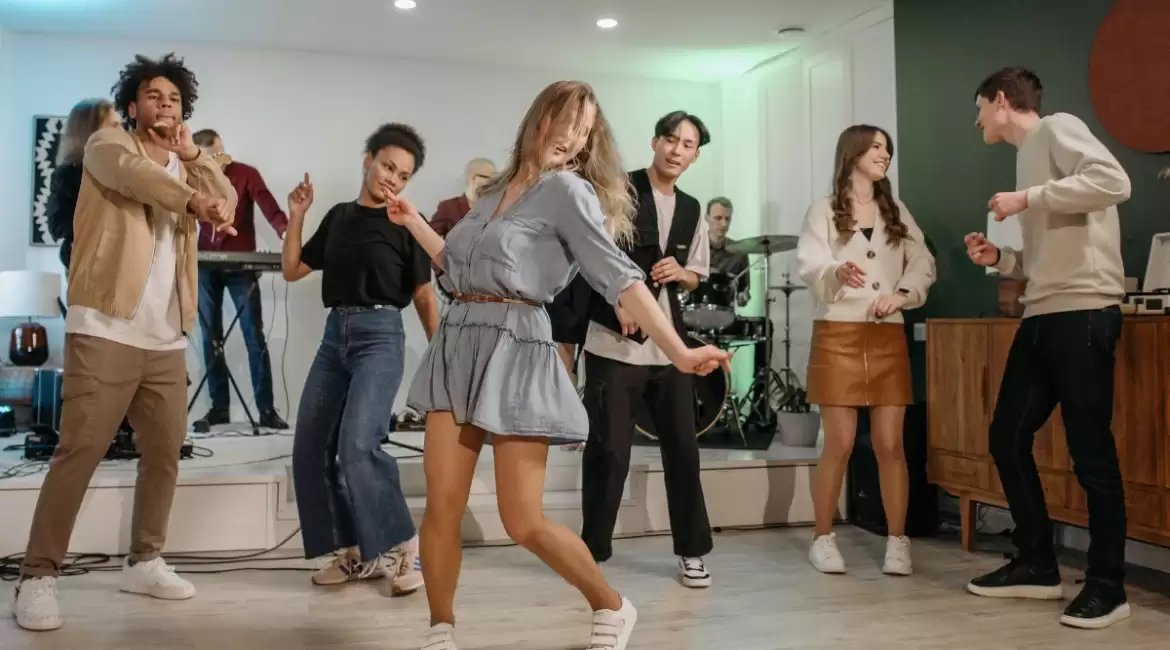House Dance is a dynamic and soulful style of street dance that emerged from the underground club scenes of Chicago and New York City in the late 1970s and early 1980s. Rooted in a rich tapestry of rhythmic and cultural influences, House Dance is characterized by its fluid footwork, expressive body movements, and the deep connection between dancer and music. This dance form, which evolved alongside House music, offers dancers a unique blend of freedom and structure, allowing for both improvisation and intricate choreography. House Dance is not just about the steps; it embodies a spirit of community, self-expression, and the enduring power of rhythm. To truly understand House Dance, one must delve into its history, foundational moves, and the vibrant culture that continues to inspire dancers around the world.
History of House Music
The origins of House music and its accompanying dance styles are open to multiple interpretations, reflecting the diversity and complexity of its history.
It’s crucial to recognize that “dance history” is essentially an amalgamation of numerous personal stories and experiences.
These narratives are not our own, and we do not adhere strictly to a single version; instead, we share the accounts that have been conveyed to us.
In 1984, Jessie Saunders released what is considered the first House music record, titled “On & On,” co-written by Vince Lawrence. While similar sounds existed before, the intentional branding of the genre, with the artist/producer being a DJ and declaring, “THIS is House music,” first took root in the Chicago community. Undoubtedly, there are numerous other stories about the early days of House music that remain less well-known and have yet to be widely shared.

In the late 1970s, the underground music scene began to grow weary of the predictable and overly commercialized nature of Disco music. Two influential DJs from New York City, Larry Levan and Frankie Knuckles, started experimenting by blending Disco with other musical elements, such as breaks, Afro beats, and electronic music.
Soon after, these innovative sounds were being sold in record shops across New York. This new fusion of music caught the attention of the owner of a prominent Chicago club named “The Warehouse.” Recognizing its potential, the club started playing this fresh, eclectic music, which resonated with the club-goers and laid the foundation for what would become known as House music.
This evolution was not just a musical revolution but a cultural one, influencing dance styles, fashion, and the overall nightlife scene. House music, born out of a desire for something new and authentic, quickly spread from Chicago to the rest of the world, transforming the musical landscape and inspiring countless artists and DJs globally.
Other Origins of House Music
Another compelling aspect of House music’s history revolves around the popularization of record shops during the time when The Warehouse was gaining mainstream attention. As record shops became more popular, customers frequently requested the type of music played at The Warehouse. To meet this demand, shop owners started categorizing these tracks under a new section labeled “House,” which helped market the genre more effectively.
There is also a notable story involving Leonard “Remix” Rroy, a DJ from Chicago, who is often credited with inadvertently coining the term “House.” During the Warehouse era, Chicago was also famous for its juice bars—venues that didn’t serve alcohol but offered vibrant spaces for dancing—as well as communal parties hosted at local high schools. Leonard secured a gig DJing at one of these juice bars, where he played his unique mixes. When the venue owner asked him, “What do you call this music?” Leonard, drawing inspiration from his practice of creating music in his mother’s basement, responded, “Well, I’m making this stuff in my mom’s basement, so I’m gonna call it House.” The venue began advertising with the phrase “We play House music here” on billboards and posters, cementing the term in the local lexicon.
The roots of House music also extend beyond clubs into community gatherings. Larry Levan, a DJ known for his work at The Garage in New York, was once offered a gig in Chicago’s clubs but declined, recommending his friend Frankie Knuckles instead. At the time, they did not have a specific name for the music they were playing, which gave them the creative freedom to experiment with different sounds. They made and played the music without considering it a significant innovation until other DJs began claiming they had invented it. This commercialization made it challenging to pin down the origins of both the music and the term “House.”
Identifying the exact origins of House music or the term “House” is inherently difficult. However, the shared experience of the vibrant social and party culture, particularly at The Warehouse, played a crucial role in the development and recognition of House music as a distinct genre.
The music played at The Warehouse resonated deeply with people, transforming club visits from casual activities into passionate obsessions. For many, their lives began to revolve around the clubs, reflecting the profound impact and powerful experience House music offered. This intense devotion helped solidify House music’s place in musical history.

House Dance Clubs
Why was (and continues to be) the connection between House dance and its enthusiasts so powerful?
To grasp this, it’s essential to recognize that House Dance, like other street dance styles, emerged not only as a celebration of music but also as an escape from various struggles. People flocked to the clubs seeking more than just a party; they sought an emotional and physical release.
The gospel-like vibes, powerful bass beats, and hypnotizing lyrics of House music created the perfect atmosphere for this cathartic experience. The underground clubs of Chicago and New York quickly became sanctuaries of freedom and expression.
House Dance underwent several stages of evolution. Initially, it was very grassroots, with passionate club-goers dancing to funk, soul, disco, rock, boogaloo music, “Black Music,” or “Soul Music.” Among these enthusiasts, some simply enjoyed the scene, while others identified as “dancers.” These dancers didn’t have designated circles, platforms, or even much room to dance in a highly expressive manner.
As the 80s and 90s approached, the dynamic began to shift. Dancers started to draw more attention to themselves by forming cyphers—circles where one person danced in the center while others watched and appreciated the performance. This evolution marked a transition from individuals dancing wherever they could find space to a more communal and focused form of expression, where the collective appreciation of a dancer’s skill became central.
The emotional and communal aspects of House music and dance made these clubs powerful spaces. They were places where people could shed their daily struggles, find a sense of belonging, and express themselves freely. This powerful connection, born out of both celebration and escape, is what made House dance clubs such pivotal and enduring parts of the cultural landscape.
Check Your Body At The Door
Check Your Body At The Door is a documentary that delves into the vibrant underground House Dance scene in New York City. It captures the essence of what it meant to be a part of this dynamic culture, as illustrated by the following quote:
“‘Check your body at the door’ means you take your attitude, your baggage, all of that, you check it at the door, and then you go into the club, and you’re a totally different person. You enjoy aggravation-free, stress-free, life problem-free. A club head is someone who literally lives for the club, who makes time religiously to throw down and dance. I am a Club Head.”
This statement vividly depicts the transformative experience of being a House dancer. The dancers weren’t confined by rules or steps taught by others; instead, they created a dance style that was as liberating and cathartic as the music itself.

House Dance emerged from a deep, personal connection to the music. It wasn’t about following counts or adhering to a structured format. Rather, it was driven by passion, a desperate need for movement, and a profound connection to the rhythms and beats. Dancers were encouraged to come as they were, to express themselves freely, and to feel the music in their own unique way. There were no rules.
Barbara Tucker, another prominent figure in the scene, captures this sentiment beautifully:
“House Dance was not based on counts and structure, but on passion, desperation for the movement, connection to the music. Come as you are. Dance as you. Feel as you are. There’s no rules.”
The documentary highlights how these underground clubs served as sanctuaries where individuals could shed their daily stresses and immerse themselves in a world of pure expression and joy. It wasn’t just about dancing; it was about experiencing a complete transformation and finding a place of belonging within the pulsating heart of House music.
House Dance Influences
House Dance evolved through the incorporation of various dance styles, creating a rich tapestry of movement and expression. The inclusive nature of House Dance clubs allowed dancers from diverse backgrounds to contribute their unique influences, resulting in a vibrant and dynamic dance form.
The foundational elements of House Dance draw from a multitude of styles. African dance contributed intricate footwork and expressive torso movements. Tap and Jazz added grace and fluidity, while Capoeira introduced a sense of acrobatics and agility. Latin dance steps brought rhythmic variety, and the athleticism of martial arts provided strength and precision. These diverse influences combined with spontaneity, creativity, and an enduring love for the music to form what we recognize as House Dance today.
Don Welsh, a promoter from Underground Network, emphasizes the unifying power of House music and dance:
You don’t have to be black, white, gay, or straight. We have one common thing – and that’s the music.
This inclusive spirit fostered a dance culture where everyone, regardless of background, could find a place and express themselves freely. The synergy of different dance styles within House Dance not only enriched its aesthetic but also reinforced its role as a communal and unifying art form. The essence of House Dance lies in its ability to blend diverse influences into a cohesive and exhilarating expression of movement, reflecting the unity and creativity of the community it represents.
Codification of House Dance Moves
By the early 2000s, three generations after House Dance first emerged, the dance moves began to be formally codified in New York City. This process was significantly influenced by notable House dancers and organizations, including Brian Green, Mop Top, Elite Force, Dance Fusion, and World Soul. These pioneers played a crucial role in developing a structured “syllabus” for House Dance moves, helping to preserve and standardize the form.
To grasp the essence of any freestyle dance culture, it is important to ask foundational questions: “Who, what, when, where, why?” These questions lead us to understand that when people dance, they carry with them their heritage and personal emotional journeys.

We have to understand that much later certain movements were given labels, but it all starts with people being people.
Initially, House Dance was a raw, organic expression, with movements naturally evolving from the dancers’ interactions with the music and each other. As the dance form matured, specific movements were identified and named, creating a lexicon that dancers could reference and build upon. This codification helped in teaching, preserving, and promoting House Dance, ensuring that its rich history and diverse influences could be passed on to future generations.
The formalization of House Dance moves did not diminish its spontaneity or emotional depth. Instead, it provided a framework that highlighted the dance’s complexity and artistic merit, while still honoring the individuality and creativity that are at its core. Through this structured approach, House Dance has continued to thrive and evolve, maintaining its relevance and appeal in the global dance community.
Culture of House Dance – “House Is A Feeling”
What does “House is a feeling” mean to people?
For many, House Dance is deeply rooted in rhythm-based backgrounds and cultures rich in drumming traditions. The individuals who pioneered House Dance were immersed in these rhythms from birth, embodying a natural connection to the beat. While you can learn the steps and techniques, the essence of House Dance—the feeling—cannot be taught.
House Dance is fundamentally about freedom. It’s about immersing yourself in the music and letting the movements flow naturally from that emotional connection. As one dancer puts it, “House is some freedom dancing.” This means that when you truly feel the music, your body responds instinctively, creating movements that are genuine and uninhibited.
“House is a feeling.” This phrase encapsulates the core of House Dance. Learning the foundational steps is essential, as it provides an understanding of the dance’s roots and context. However, the ultimate goal is to use that foundation as a springboard for expressing how the music makes you feel. The foundation is not the end but a means to tap into the deeper, more personal experience of the dance.
The essence of House Dance is captured in the Jack, the signature groove that defines the style. The Jack is more than just a movement; it embodies the rhythm and feeling that are central to House Dance. It is through the Jack that dancers connect with the music on a visceral level, allowing the true spirit of House to shine through.
In essence, House Dance is a celebration of freedom, rhythm, and emotional expression. It transcends mere technique, inviting dancers to explore and convey their unique responses to the music. This feeling of liberation and connection is what makes House Dance so powerful and enduring.
A few base moves of House Dance
House Dance is characterized by a variety of dynamic and expressive moves. Here are some of the foundational steps that form the core of this vibrant dance style:

- Jack In The Box: This move involves a rhythmic bobbing motion of the torso, which is central to the feeling of House Dance. The dancer’s upper body moves up and down in sync with the beat, creating a groove that sets the tone for other movements.
- The Swivel: This step features a twisting motion of the hips and legs. The dancer shifts their weight from one foot to the other while pivoting on the balls of their feet, creating a fluid, swiveling action.
- Farmer: The Farmer step mimics the motion of a farmer planting seeds. The dancer’s movements are low to the ground, with a distinct emphasis on rhythm and grounded energy.
- Shuffle Step: This quick, sliding step involves shuffling the feet back and forth. It requires agility and precision, allowing the dancer to move smoothly across the floor.
- Heel-Toe: The Heel-Toe step is a playful and intricate move where the dancer alternates between stepping on their heel and toe. This creates a rocking motion that adds complexity to the dance.
- Stomp: A powerful and percussive move, the Stomp involves forcefully striking the ground with the foot. It adds a strong rhythmic accent to the dance, emphasizing the beat.
- PBR (Push Break Rock): This move combines a push, break, and rock motion. It involves pushing off with one foot, breaking the movement with a quick shift, and then rocking back into the original position.
- Box: The Box step outlines a square on the floor with the dancer’s feet. This move involves stepping forward, sideways, and backward in a rhythmic pattern, creating a box-like shape.
- Train: The Train step mimics the motion of a train chugging along the tracks. The dancer’s feet move in a continuous, rhythmic pattern, simulating the repetitive motion of a train.
- Skate: This move resembles the motion of ice skating. The dancer glides one foot forward and then the other, creating a smooth, sliding effect.
- Loose Leg: The Loose Leg step involves a relaxed, swinging motion of the legs. The dancer alternates lifting and swinging each leg, creating a loose, carefree vibe.
These base moves provide the foundation for House Dance, each contributing to the overall fluidity, rhythm, and expressiveness of the style. Mastery of these steps allows dancers to explore and develop their unique interpretations, connecting deeply with the music and the culture of House Dance.
Summary
House Dance, a vibrant and dynamic form of street dance, has its roots entrenched in the underground club scenes of Chicago and New York City during the late 1970s and early 1980s. This captivating dance style emerged alongside the burgeoning House music genre, characterized by its pulsating rhythms, infectious beats, and soulful melodies. House Dance quickly became a cultural phenomenon, drawing inspiration from a multitude of sources including African dance, Latin rhythms, funk, soul, disco, and more.
At its core, House Dance is a celebration of rhythm and movement, blending intricate footwork with fluid body movements to create a mesmerizing and expressive dance form. Dancers embody the music, allowing its melodies and rhythms to guide their movements, while also infusing their performances with personal flair and creativity. This fusion of technical skill and artistic expression is what sets House Dance apart and gives it its distinctive energy and vibrancy.
One of the defining features of House Dance is its emphasis on improvisation and freedom of expression. While there are foundational steps and techniques, House Dance encourages dancers to explore and innovate, giving rise to a diverse array of styles and approaches. Whether dancing solo or in a group, House dancers revel in the spontaneity and unpredictability of their movements, creating captivating performances that are as unique as the individuals who dance them.
Beyond its technical aspects, House Dance embodies a rich cultural heritage and a sense of community. Many of the early House Dance pioneers came from marginalized communities, and House Dance provided them with a means of self-expression and empowerment. It became a space where people from all walks of life could come together, share their stories, and connect through a shared love of music and dance.


Leave a reply